Captivating Coorg: Unveiling the Coffee Plantations of South India
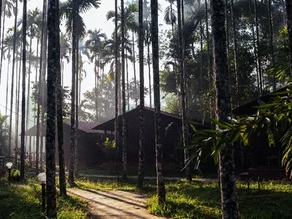
Coorg, commonly referred to as Kodagu, is a beautiful hill town situated in Karnataka, India’s southwest. The area is renowned for its luxuriant vegetation, agreeable weather, and stunning coffee farms. If you enjoy drinking coffee, Coorg is the ideal place for you to visit in South India’s coffee plantations. We’ll explore the allure of Coorg and its coffee farms in this blog. In the heart of Karnataka’s verdant hills and foggy valleys sits the captivating region of Coorg. Huge coffee estates, gorgeous scenery, and mouthwatering South Indian cuisine are among of this enthralling area’s most well-known features. Let’s set off on a quest to learn the mysteries of Coorg, a place that will awe and please all of your senses. Coffee Plantations Numerous coffee plantations can be found in Coorg, and they provide tourists with an interesting and rejuvenating experience. The plantations, which are dispersed over the mountainous landscape, provide breathtaking views of the mountains and valleys around. Visitors to the plantations can enjoy a guided tour that includes a stroll through the coffee plants, instruction on how to make coffee, and a sampling of freshly brewed coffee. Tata Coffee Plantation, Coorg Consolidated Commodities, and Pollibetta Coffee Estate are a few of the well-known coffee plantations in Coorg. Coorg is known for its coffee, and visiting this area would be completed without visiting some of its fragrant farms. Join guided tours to see how coffee is made, from the luscious green coffee bushes to the drying and roasting of the beans. Engage your senses as you inhale the heady aroma and discover the methods and background of Coorg’s renowned coffee. Credit: Unsplash Natural Beauty Coorg is renowned for its natural beauty, which includes waterfalls, wildlife, and picturesque landscapes. A few of the area’s most well-known attractions are Abbey Falls, Iruppu Falls, and Nagarhole National Park. Tourists can also go on a trek through the Brahmagiri Hills, which provides sweeping views of the surrounding peaks and valleys. From its gentle lakes and tumbling waterfalls to its rolling hills and deep woods, Coorg is blessed with unspoiled natural beauty. Investigate the intriguing Abbey Falls, where flowing waters produce an amazing spectacle. Explore Pushpagiri Wildlife Sanctuary’s mist-covered grounds, which are home to a wide variety of plants and fauna. Get lost in the peace of Talacauvery, the source of the revered River Cauvery, and take in the expansive vistas from Raja’s Seat, a well-known location for sunsets. Credit: Unsplash South Indian Flavors South Indian food with a lot of depth and flavour is popular in Coorg. The varied cultures of the area have an impact on the cuisine, which offers both vegetarian and non-vegetarian options. Coorg is known for its Pandi Curry, Kadumbuttu, and Noolputtu dishes. Additionally, visitors can sample the well-known Coorgi coffee, which is renowned for its robust flavour and aroma. With its delicious fusion of South Indian flavours, Coorg is a culinary wonderland. Enjoy traditional Coorgi food, which is renowned for its unusual preparations and distinctive spices. Enjoy specialties like bamboo shoot curry, kadambuttu, and pandi curry (a curry made with pork). Remember to enjoy a cup of freshly brewed Coorgi coffee, known for its rich scent. Adventure Activities Visitors can engage in a range of adventure activities in Coorg, such as river rafting, camping, and trekking. The area is ideal for walking and camping because of its rugged terrain and beautiful scenery. Additionally, visitors can experience the thrilling and adventurous river rafting in the Barapole River. Adventure seekers are drawn to Coorg by its variety of outdoor pursuits. Take exhilarating hikes up Tadiandamol, Coorg’s highest peak, or go white water rafting down the Barapole River. Visitors to Nagarhole National Park have the chance to see spectacular animals including elephants, tigers, and leopards in their natural surroundings. Credit: Unsplash Local Culture The culture of Coorg, which includes indigenous dance styles, music, and festivals, is well-known for being dynamic and rich. The Kodava community, which is renowned for its friendliness and hospitality, has an impact on the culture of the area. By participating in regional festivities like the Kailpodh and Puttari festivals, tourists can get a taste of the culture. Staying in a traditional homestay tucked away among the coffee plantations will allow you to experience the welcoming hospitality of Coorg. Participate in cultural events like the Kodava Nata, a traditional Kodava dance, to get to know the locals and learn about their customs and traditions. Take part in everyday life there and make long-lasting memories of the colourful Coorg culture. Historic Forts and Temples To properly appreciate Coorg’s rich history and culture, visit the forts and temples that date back centuries. Learn about the Madikeri Fort, a 17th-century fortification that serves as a reminder of Coorg’s past. Explore the Shiva-dedicated Omkareshwara Temple’s intricate architecture and seek blessings at the renowned Bhagamandala Temple, which is situated where the Cauvery and Kannike rivers meet. Coorg promises a very engaging experience with its coffee-scented air, picturesque scenery, and rich cultural legacy. Be sure to experience the area’s natural splendour, savour the flavours of South Indian cuisine, and immerse yourself in the peace of Coorg’s coffee plantations as you plan your trip. Prepare to be spellbound by the beauty of this breathtaking location in the heart of South India. In conclusion, Coorg is a fascinating location that provides tourists with a distinctive and rejuvenating experience. The area is the ideal place to spend a wonderful holiday because of its coffee farms, scenic surroundings, South Indian cuisine, adventurous activities, and local culture. Pack your luggage and travel to Coorg to discover the stunning coffee farms of South India. Credit: Unsplash
7 Days in Rajasthan: A Perfect Itinerary for Exploring the Land of Maharajas
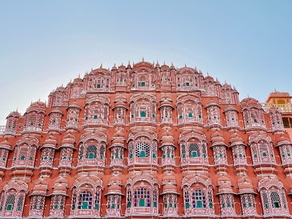
Welcome to the enchanting land of Rajasthan, where history, culture, and grandeur blend seamlessly to create an unforgettable travel experience. Known as the “Land of Maharajas,” Rajasthan is a vibrant state in India that boasts magnificent palaces, majestic forts, and a rich heritage that dates back centuries. A visit to Rajasthan is like stepping into a fairy tale, where every corner exudes regal splendor and tales of valor. Without a doubt, Rajasthan attracts a sizable number of tourists due to its vibrant cities. Men enjoy the colourful turbans that ladies wear, and even the names of the cities Jaipur (Pink City), Udaipur (White City), and Jodhpur (Blue City) have colours linked with them. The most renowned annual camel market in Pushkar, which takes place in the months of October to November, is the best place to view all these colours in action. In its territory count the most beautiful attractions of India with its impenetrable forts, the magnificent havelis, as well as a richness of cut and traditions that have no equal. With so many reasons to visit, is it any question that this place serves as the perfect destination to introduce your kids to the wonderfully rich past of their country? A Rajasthan itinerary is an ideal way to bond with your loved ones and have a memorable time. It is advised that you schedule your trip to Rajasthan during the winter months if you want to visit the most picturesque locations there. It would be best to schedule your trip for the months of November through February. Extreme summer and winter temperatures are typical in Rajasthan. Planning a trip to Rajasthan can be overwhelming due to the plethora of attractions and cities it offers. Literally any city can be considered as the starting point of your Rajasthan trip. However, we’ve given you an ideal travel plan to follow in this travel guide to Rajasthan. To help you make the most of your time, we have crafted a perfect 7-day itinerary that will take you through the must-visit destinations in Rajasthan. Day 1: Arrival in Jaipur – The Pink City Your journey begins in Jaipur, the capital city of Rajasthan and famously known as the “Pink City” due to its pink-hued buildings. Start your day by visiting the iconic Hawa Mahal, a stunning palace known for its intricate honeycomb-like facade. Explore the grandeur of the City Palace, which houses various museums showcasing Rajasthani art and artifacts. In the afternoon, immerse yourself in the local culture at the bustling bazaars of Jaipur. Visit the Johri Bazaar and Bapu Bazaar to shop for vibrant textiles, handicrafts, and precious gemstones. Don’t miss the chance to savor the mouthwatering Rajasthani cuisine, known for its rich flavors and royal heritage. Credit: Unsplash Day 2: Jaipur – Beyond the City Walls On your second day, venture beyond the city walls of Jaipur to explore the magnificent Amber Fort. Located on a hilltop, this fortress offers breathtaking views of the surrounding landscape. You can either trek up to the fort or opt for an elephant ride for an authentic experience. In the afternoon, visit the Jantar Mantar, an astronomical observatory built in the 18th century. Marvel at the impressive instruments that were used to measure time and track celestial bodies. End your day with a visit to the serene Jal Mahal, a palace situated in the middle of the Man Sagar Lake, offering a picturesque sight. Credit: Unsplash Day 3: Jodhpur – The Blue City Leave Jaipur behind and travel to Jodhpur, famously known as the “Blue City” due to its blue-colored houses. Start your exploration with a visit to the magnificent Mehrangarh Fort. This imposing fort stands on a hilltop and offers panoramic views of the city. Explore its palaces, courtyards, and museum, which showcases an impressive collection of artifacts. Afterward, wander through the narrow streets of the old city and soak in the vibrant atmosphere. Visit the bustling Sardar Market, where you can shop for handicrafts, textiles, and spices. Don’t forget to try the local delicacy, “Makhaniya Lassi,” a creamy yogurt-based drink that is a specialty of Jodhpur. Credit: Unsplash Day 4: Jaisalmer – The Golden City Embark on a scenic drive to Jaisalmer, known as the “Golden City” due to its golden sandstone architecture that seems to glow in the sunlight. Explore the magnificent Jaisalmer Fort, a UNESCO World Heritage Site. Wander through its narrow lanes, discover intricately carved havelis (mansions), and soak in the stunning views of the city. In the evening, head to the famous Sam Sand Dunes, located on the outskirts of Jaisalmer. Enjoy a camel safari across the desert, witness a mesmerizing sunset, and indulge in a traditional Rajasthani dinner accompanied by folk music and dance performances. Credit: Unsplash Day 5: Jaisalmer – Beyond the Fort On your fifth day, explore the hidden gems of Jaisalmer beyond the fort. This settlement, which resembles a fairytale village from the Thar Desert, was established by Raja Jaisal about 800 years ago. Due to its advantageous location along the camel trade routes, the city played a significant role as a commerce hub. The golden yellow sandstone havelis are still in fantastic shape. The Trikuta Hill, which is about 80 metres high, is where the Jaisalmer Fort is located. There are many stunning Jain temples in the fort. Additionally, you can schedule a trip to Jaisalmer for the annual Desert Festival that takes place in January and February. Both colour and activities abound at the festival. The area is renowned for its rugs, camel safaris, masonry, Rajasthani mirror work, and needlework. The famed Sam sand dunes tour can then be continued. The distance between it and Jaisalmer is 42 km. The closest vantage point for the sandy desert is likewise provided by the dunes. You can also see the patterns and themes that
From North to South: Best Travel Destinations to Explore in India
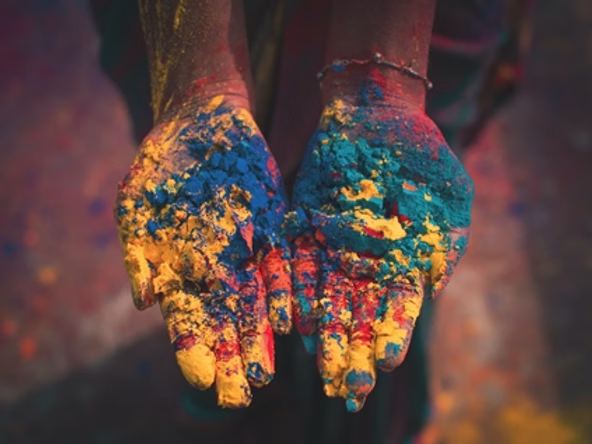
India, a mosaic of peoples, places, and customs, entices visitors from all over the world with its alluring variety and breathtaking beauty. This enchanted country offers a wealth of travel experiences that are as different as they are breathtaking, spanning from the majestic Himalayan peaks to the peaceful Indian Ocean coasts. Join us as we travel virtually the whole length and breadth of this magnificent nation, exploring its rich tapestry of sights, sounds, and tastes. India promises an extraordinary trip that will leave an indelible impact on your soul, from the mysterious realms of the north to the tropical delights of the south. India’s unmatched diversity and spectacular beauty are what make it so appealing as a tourism destination. Every region of this country has something special to offer, from the historical sites in the north to the spiritual havens in the east and the tropical splendour in the south. Embrace India’s colourful tapestry, where age-old customs and cutting-edge technology coexist, and set out on a tour that will stimulate your senses and leave you with lifelong memories. We would love to provide you with a curated list of of the best travel destinations spanning from North to South India. Credit: Unsplash Delhi: Exploring the Capital’s Rich Heritage Delhi, the vivacious capital of India, is a city that skillfully combines its significant historical past with a contemporary global vibe. Delhi provides a thorough travel experience that captures the spirit of the nation with its stunning monuments, vibrant markets, delectable street food, and engaging museums. Delhi has an impressive historical past, which is reflected in its magnificent monuments. The Red Fort, a UNESCO World Heritage Site that housed Mughal rulers for almost 200 years, is one of the city’s most recognisable features. Wander around the expansive gardens, explore the towering red sandstone walls, and take in the complex design of the Diwan-i-Aam (Hall of Public Audience) and Diwan-i-Khas (Hall of Private Audience). In the evening, take in the captivating sound and light show that brings the fort’s history to life. Credit: Unsplash The imposing Qutub Minar, a UNESCO World Heritage Site and the tallest brick minaret in the world, is another must-see landmark. Explore the exquisite carvings and stunning architecture of this historic Islamic building, which serves as a reminder of Delhi’s illustrious history. Visit the nearby Qutub Complex to see the Iron Pillar and other historical buildings like the Alai Darwaza. Credit: Unsplash The lively markets in Delhi are well known for providing a sensory experience. Visit Chandni Chowk, one of Old Delhi’s largest and oldest markets, where quaint pathways are lined with stores offering everything from gadgets and spices to clothing and jewellery. Get lost in the colourful pandemonium, bargain with store owners, and take in the upbeat mood. Don’t forget to try some of Delhi’s world-famous street cuisine, including its tantalising chaat (savoury appetisers), fiery kebabs, and tempting sweets like jalebi and rabri. Delhi provides a variety of lodging choices to fit every need and preference. There are many options for travellers, from opulent five-star hotels to affordable guesthouses and hostels. Connaught Place, Karol Bagh, and South Delhi are popular lodging choices since they provide easy access to the city’s top sights and transportation hubs. Delhi provides a thorough travel experience that truly captures the spirit of India with its historical significance, cultural attractions, busy markets, mouthwatering street food, and interesting museums. Experience the architectural magnificence of buildings like the Red Fort and Qutub Minar, stroll through the vibrant markets of Chandni Chowk, savour the savoury street food, and explore the museums to learn more about the city’s extensive cultural history. With a variety of lodging options and accessible transportation, seeing Delhi is a memorable trip that leaves visitors with enduring memories of this alluring city. Jaipur: The Pink City’s Royalty and Charm The colourful city of Jaipur, also known as the Pink City of India, captivates tourists with its extensive history, magnificent architecture, and extravagant culture. Jaipur offers a mesmerising fusion of traditional enchantment and contemporary energy. It is known for its majestic palaces, intricate handicrafts, and delectable cuisine. Without visiting the magnificent Amer Fort, which is situated just outside of the city of Jaipur, a trip there is not complete. This UNESCO World Heritage Site, which is surrounded by the Aravalli hills, is impressive due to its detailed carvings, gorgeous mirror work, and large courtyards. Take a jeep or elephant ride up to the fort to experience the splendour of the Rajput style of construction. Credit: Unsplash Other prominent forts in Jaipur are Nahargarh Fort and Jaigarh Fort, each of which has a distinctive beauty and historical significance. These forts transport you back in time to the era of Rajput bravery and splendour while providing sweeping vistas of the city. Shopping in Jaipur is a delight, especially for those seeking out authentic Rajasthani crafts. Visit the crowded markets of Bapu Bazaar and Johari Bazaar to find a wide selection of pottery, handicrafts, jewellery, and textiles. Don’t pass up the chance to buy the renowned Jaipur blue pottery, block-printed clothing, and fine silver jewellery. Consume the regional food of Jaipur to experience the true flavours of Rajasthan. Try the well-known Dal Bati Churma, which combines baked wheat dumplings, lentils, and sweet bread crumbs. Laal Maas, a fiery red beef curry, and delectable desserts like Ghewar and Ghevar are other local specialties. For a complete gastronomic experience, try these exquisite dishes at reputable diners and nearby restaurants. Jaipur provides a selection of lodging choices to meet the requirements of every traveller. There are options to suit every preference, from opulent heritage hotels housed in old palaces to affordable guesthouses and boutique hotels. The locations of Johari Bazaar, Bani Park, and Civil Lines are well-liked for being close to important attractions and offering a variety of lodging options. With its gorgeous palaces, impressive
8 Highlights Locals agree should be on your Northeast India Itinerary
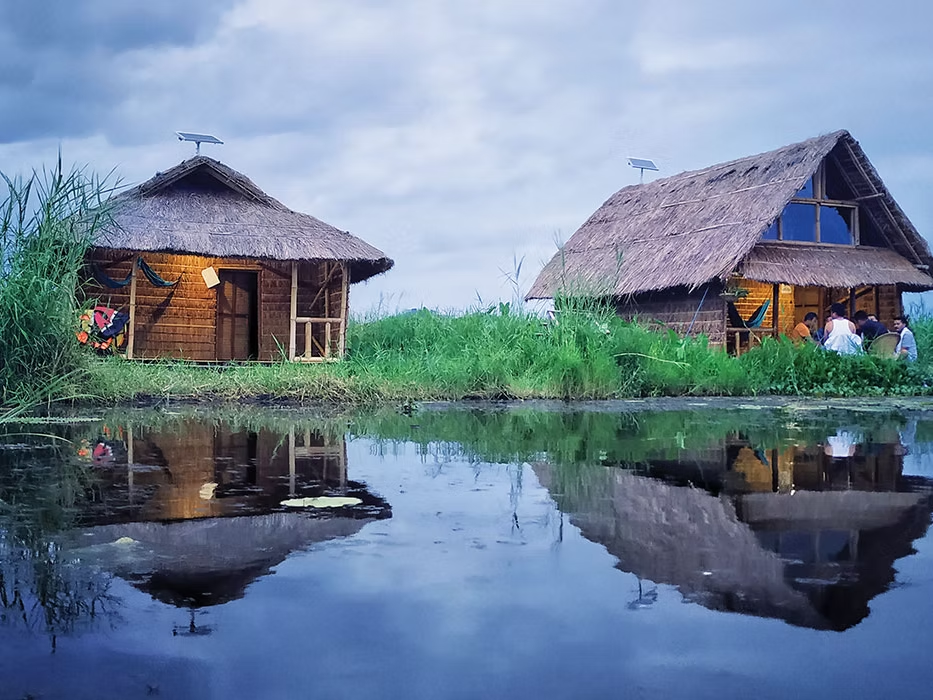
One of India’s most underrated travel destinations bursting with stunning landscapes and pleasant weather all year round, the Northeastern corner of India is a land calling out to every travel enthusiast. You can ask for any kind of travel experience, and Northeast India Tourism will hand it to you without missing a beat. From adventure to cultural or nature travel experience, this is your one-stop destination. The rich history and diversity of the traditions and the abundance of jaw-dropping surroundings and the bountiful gifts of nature in terms of flora and fauna will leave you astounded. Much of the unexplored hidden gems in Northeast India still sit in their quiescent state but here is a little secret sourced directly from the locals. So, on your next vacation, make sure you try out to visit these lesser-known places of Northeast India and experience these local recommendations. Places to visit in Northeast India Heritage Walk in Reiek, Mizoram Rice Beer Festival, Arunachal Pradesh Head hunter tribe, Nagaland Floating National Park, Manipur The Black Magic Village, Assam Cycling tour in Sikkim Cave exploration in Meghalaya Unatoki, Tripura 01. Heritage Walk in Reiek Photo Credit: The Hans India Mizoram remains largely unblemished as it is the least known state among the other states of Northeast India. This quaint hill station is bestowed with vast evergreen forests and pleasant weather all year round. The picturesque towns and villages of Mizoram are equally endearing and soothing. Of the number of offbeat and recommended things to do in Northeast India, the heritage walk around Reiek village is surely top-tiered. This walk will take you through the rich exotic subtropical forest of Mizoram. The walk is extremely pleasing with the long winding roads maintained by the villagers to retain its clean surroundings. The walk ends when your reach the top of Reiek peak and the view from the peak is so enchanting it will leave you breathless. 02. Dree Festival/ Rice Beer Festival Photo Credit: Slurrp Tucked amidst tall mountain ranges and stunning vista of green meadows and flourishing paddy fields, the state of Arunachal Pradesh is the epitome of a natural wonder. The Dree Festival in Arunachal Pradesh is truly a league of its own. During this agricultural festival of the Apatani tribe, one can witness the rich cultural and religious traditions practiced by the tribe. Dree festival is also famous for the traditional rice beer it serves. It is made by fermenting rice and millet with yeast that gives off a sweet and tangy taste. This is one noble way to peek a glimpse into the world of the Arunachalis. 03. Greet the Head hunter tribes in Mon Photo Credit: Daily Mail Known for its vibrant culture and captivating landscapes, Nagaland is home to one of the many head hunter tribes, the Konyaks. Although the practice of headhunting is now banned and a tale of the past, some surviving elders were once known for this fierce and fearless practice. On visiting the Mon district, you will be greeted by headhunters with pierced ears and tattooed faces who will gladly recount their tales to any interested listener over a cup of tea. Thus, this will count as an encounter to remember and a good travel chronicle to talk about for years to come. 04. Stay at the Floating National Park in Loktak Photo Credit: Tata Trusts Horizons The literal translation of the term Manipur is the ‘Land of the Jewels’. This term is well accounted for with the natural wonders that encompass the landscapes of Manipur. And when in Manipur, a visit to the world’s only floating lake and floating national park is a must. The Keibul Lamjao National Park is home to an endangered deer called Sangai which is native only to Manipur and you can get sightings of rare and endemic species of fauna. There are two floating island resorts called Phubala and Sendra where you can enjoy the stunning and rich biodiversity of Loktak Lake and rest and blend with nature. 05. Visit the Black Magic Village of Mayong Photo Credit: Culture Trip Assam is often considered the gateway to Northeast India with its well-established connectivity to other major cities in India. Assam is home to a diverse group of people, tribes, cultures, and traditions. One such group belongs to the mysterious village on the banks of the Brahmaputra called the Mayong village. Also called the Land of Black magic, this village perfectly caters to travelers and people who are seekers of dark art practices. Witness the witchcraft rituals and visit The Mayong Central Museum and Emporium of Black Magic and Witchcraft to know more about the history and workings of the village’s mysterious practices. 06. Cycle around Sikkim Photo Credit: Thrillophilia Sikkim is one of the most visited destinations and has been added to the best places to visit in Northeast India by seasoned travelers for years. The lifestyle adopted by the natives of Sikkim is truly commendable. With their eco-friendly friendly practices and environmentally conscious decisions like organic farming and going plastic-free, Sikkim has truly been a model for other Indian states. And to blend into the vibe of Sikkim, you can opt to be a sustainable and responsible traveler by going on a cycling tour while in Sikkim. The tour starts from Gangtok and ends in Darjeeling. Rent a cycle or a mountain bike from Gangtok and embark on a trip of a lifetime where you will be treated to scenic vistas of the lush green forests, snow-capped Himalayan ranges, endearing villages, luscious paddy fields, beautiful lakes, and iconic tea gardens along the way. 07. Explore the Caves in Meghalaya Photo Credit: Outlook India The incredibly wild yet captivating state of Meghalaya is indeed a must-visit place in Northeast India. Meghalaya is home to some of the most exciting and invigorating attractions like the living root bridges, magnificent waterfalls and lakes, acres of pine-covered forest, and mesmerizing cherry blossoms. Of all these
7 Things to Do in Munnar for an Adrenaline Kick
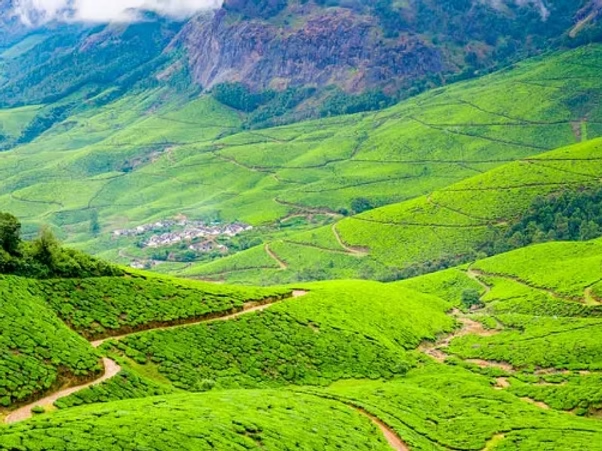
A tour to the green valley welcomes you with the aromas of tea plants, and organic ground spices to cascades sweeping meander down the mountainside overlooking the vibrant ferns, petals, and blooming flowers. To go off the beat on your Munnar trip do add these activities to your itinerary and experience a great vacation in the majestic mountains. In this blog post, we have shared a complete list of the best things to do in Munnar. Tea Estate Tour Quad biking Rainforest Trekking Apprise Local Art Ayurvedic spa Mountain Cycling Camping A pic from keralatourism website 7 Best Things to Do in Munnar Munnar is a place where you can enjoy cool weather and scenic views, wander through markets and shop for unique things and enjoy the local cuisine. It is a beautiful place to visit and there are many things to do in and around the city. In the below list, you will find the 7 best things to do in Munnar for an adrenaline kick. 01. Tea Estate Tour Kolukkumalai tea estate is the highest estate following the old- methods of processing tea from Handpicked leaves to manually packed sachets. A tour across the estate to watch the process of growing, collecting, and packing with attention to detail enlightens the efforts behind a cup of our zesty tea. Price: 100 Per Head. Timings: 7 AM-6 PM (Closed on Sunday). A pic from thrillophia 02. Quad Biking Dreamland, an adventure park in Munnar offers an entertainment bid to try with your playfellows and go crazy. A ride along the spice fields in the misty mountains of Munnar for an hour on ATV is a picturesque view that gives an off-beat experience. Under just Rs. 500 it is one of the best things to do in Munnar. Price: 500/-Per Adult. Timings: 6 AM-7:30 PM. (Depends on the weather). A picture from experience Kerala website 03. Rainforest Trekking A trek to the Mathikettan shola National Park with your squad witnessing the habitat of wildlife with birds chirping and rich vegetation. The Hike excites all age groups with the medium-level trail accompanied by a wide range of animal species like Malabar Giant Squirrel, Gaur, Sambar, and Elephants. Price: 5200 Per Adult. Timings: 9 AM to 4 PM. A pic from tut2learn.com 04. Apprise Local Art: Kalaripayattu- Kalari kshetra Kalaripayuttu – Kalari Kshetra: The southern state, of Kerala, has a unique culture, traditions, and art forms with a legacy of years that are practiced today. Kala Kshetra exhibits two art forms Kathakali and kalarippayattu for the new generation to appreciate the beauty of India Art and Culture. Kalarippayattu is a martial art that teaches physical techniques like grappling, rolling, and blocks using varied weapons curated for the art. Kathakali: The ancient art of Kerala takes you back to narrating the story through eyes, hands, and leg moments. The costumes and makeup are different to portray the characters of the stories. Timings: Kathakali: 5 AM-6 PM Kalaripayuttu: 6PM-7PM. Price: 400 Per Head. A pic from the thewindmunnarr website. 05. Ayurvedic Spa The atmosphere of cities in Kerala is soothing, and therapies at retreat centers are the cherry on top for the tourists to rejuvenate themselves naturally. Nourish yourself to vigor for your concerns with ayurvedic spa, yoga, meditation, and exercises on white sand beaches amid the green hill slopes with the soothing music of birds for a surreal experience. The therapies are done depending on the weather, climates, and skin type to enhance the system. Timings: 6 AM-7:30 PM Price: The price varies from 2500 – 5000 depending on our choice. A pic from the coconut resort website 06. Mountain Cycling Mountain cycling is an off-beat expedition to imbibe the lush green valleys of Munnar apart from trekking. Meandering on the curvy routes of Munnar Valley on a bicycle and finding the rivulets with your friends is another way to solace on your vacation. Price: 1500-3000 Rs. Timings: 8 AM-12 PM and 2 PM-6 PM. A pic from the experience Munnar website 07. Camping The meet point of three mountain ranges Mudrapuzha, Nallathanni, and Kundala is the Echo Point. Tourists with the troop spend an evening reverberating voices, watching the sunset, and hunkering down at a campfire after a 600ft hike. The echo point is the most visited place in Munnar after Tea estates as the bird view of green hills is striking with minimum cost & making it one of the cheapest things to do in Munnar. Price: Adults: 30rs Kids:15rs Timings: 6 AM-7:30 PM Personalize your Travel Experience!
Worldly Locales in India
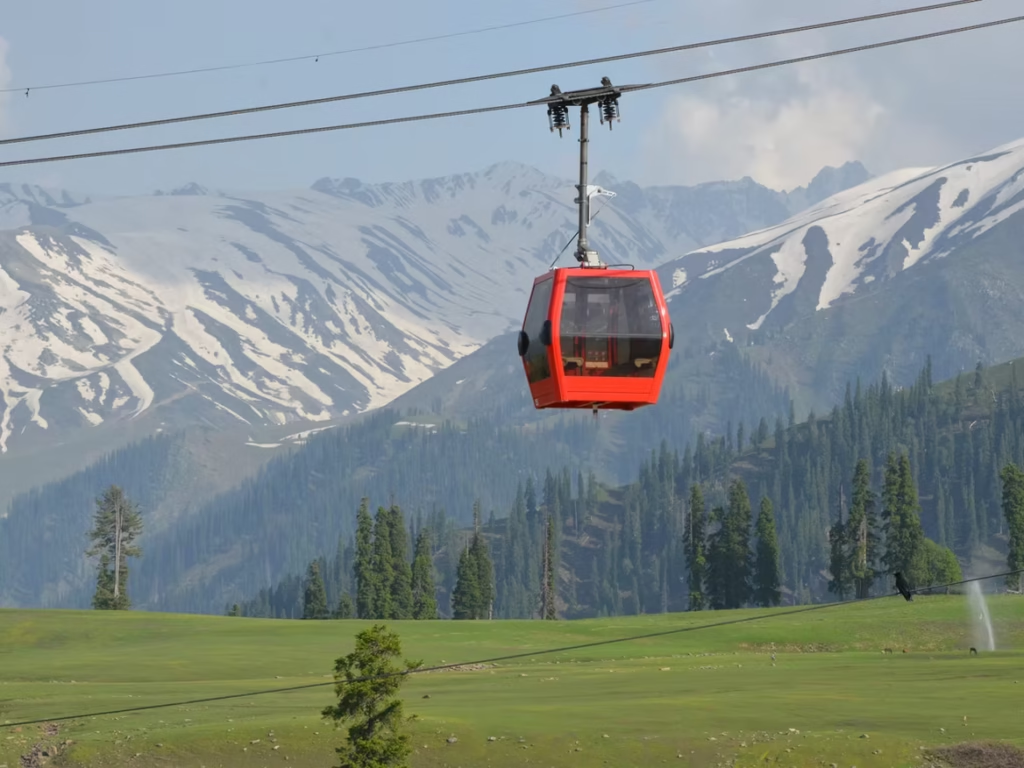
Right here in India, there are a number of incredible places you can go to if you want to experience the feeling of being in an international location without having to break the bank. These places can make you forget that you’re still in India because of the extraordinary resemblance they have to places that are from all over the world. Image by Tripoto Here are just a few of those gems that you must check out: Pondicherry Gulmarg Andaman & Nicobar Islands Khajjar Srinagar Alleppey or Alappuzha Pondicherry Pondicherry, a lovely town in Tamil Nadu has a distinct architectural and cultural style. In 1964, the city declared independence from the French. However, there are still vestiges of French culture to be found here. Pondicherry is recognized for its antique Vine-covered French-style residences, churches, and some recently built French-style businesses and brightly colored cafes. Best time to visit: October to March Image by TripAdvisor Gulmarg Kashmir, India’s magnificent crown, is often referred to as a mini-Switzerland. This is due to the number of mountains, lakes, landscapes, gardens, and valleys, as well as the snow-capped mountains, pine trees, nice weather all year, and the abundance of mountains, lakes, landscapes, gardens, and valleys. Best time to visit: January to February Image by Conde Nast Traveller India Andaman and Nicobar Islands These Andaman and Nicobar Islands are also known as the Indian Ko Phi Phi Islands. The Andaman Islands feature some of the best scuba diving locations, and everyone surrounding you is in shades of blue and green, so there’s no need to fly to Thailand for that. It’s the same view, with gorgeous surroundings, much closer to home. Best time to visit: October to May Image by Scroll Khajjar Khajjiar, also known as “India’s Mini Switzerland,” is a little hill town in Himachal Pradesh’s northern province. It’s a paradise for explorers, with a small-town ambiance, cool mountain breezes, and stunning surroundings embracing thick deodar woods, grassy meadows, and snowy mountains. Best time to visit: November to March Image by the travel shots Srinagar The most remarkable feature of Dal Lake in Srinagar is that it offers a breathtaking glimpse of the beautiful Himalayas. This is the only floating market with views of the Himalayan range. You’ll be able to experience the excitement of being in a foreign location AND the impressive scenery. Best time to visit: April to October Image by Hamni Juni Alleppey or Alappuzha Alleppey, also known as Alappuzha, is widely recognized as the “Venice of the East.” It has been an important trade hub in Kerala since prehistoric days. In today’s times, this location attracts a large number of tourists each year in India. This lovely spot is also the heart of Kerala’s backwaters, which are home to hundreds of houseboats. Best time to visit: November to February Image by Tour My India Conclusion You can experience the magic of foreign places without having to leave India. The best part about it is that you won’t have to deal with the hassle of making a visa! These places are just a few of the many incredible gems that lie within India; foreign resemblance or not. So what are you waiting for? Start planning your next vacation to one of these locations now! For more such information stay tuned to www.thetarzanway.com
Top 10 Budget Destinations in India You Must Visit in 2022
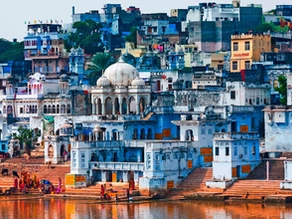
Over the years, India has seen a huge inflow of both foreign and domestic tourists travelling to all the different parts of India. As the choices for destination rise, so do the rates in all the exotic and popular destinations. During the peak tourist season, the prices skyrocket, making it almost impossible for people on a budget to travel. But some places in India perfectly cater to anyone looking to travel on a budget. It is also perfect for students who want to take a moment of relaxation away from their hectic study schedules, people who are willing to spend a few days with their friends, colleagues looking to save some money for the next big buy, or someone looking to travel solo but still looking to spend less for some reason. In this blog post, we have covered a list of options that serves as a great choice for budget destinations in India. Let’s dive right in! Budget Destinations in India India has a number of budget destinations making it a prime location for budget travelers. If you’re in the market for a new budget destination, you’re in luck. Below is a list of the best budget destinations in India that you should try. Darjeeling, West Bengal Gokarna, Karnataka Kasol, Himachal Pradesh Kodaikanal, Tamil Nadu Alleppey, Kerala Nainital, Uttarakhand Pushkar, Rajasthan Shillong, Meghalaya Mcleodganj, Himachal Pradesh Pondicherry 1. Darjeeling – Land of refreshing chai’s Credit: Joy Amed via Unsplash Darjeeling is an enthralling hill station at the foothills of the Himalayas, famous for its quaint and serene homestays and lodges. Aside from it being one of the most noteworthy destinations for its famous views of the mighty ranges of the Himalayas, it has also gained traction for offering the most delectable cup of chai. The town is also famous for being extremely budget friendly and serves as a great destination for friends and family looking for a cozy getaway from the city. Best time to Visit – March to June; October to November Average Cost (Stay & Food) – ₹1000-1300/day approx. 2. Gokarna – Of Pristine Beaches and Temples Credit: Abdullah Ahmad via Unsplash Hailed as the next big beach destination in India, Gokarna is a beautiful offbeat destination that is guaranteed to woo people from all walks of life. From transportation to accommodations to food, there is an alternative to always keep your spending petite and your adventures hefty making it one of the best budget destinations in India. The town of Gokarna also serves as a perfect combination to satiate both the spiritual longing and venturing into some intense physical pursuit like trekking, parasailing, or river rafting. Best time to Visit – June to September Average Cost (Stay & Food) – ₹800-1300/day approx. 3. Kasol – Ultimate Heaven for Backpackers Credit: Ashwini Chaudhary via Unsplash A hamlet in the confines of Himachal Pradesh, the little town bordered by the mighty Himalayan ranges is one of the most stunning places to visit in the state. It is also called the ‘Amsterdam of India’. The iconic and magnificent coniferous forests with clear streams flowing through, the lush green valleys, and the blanket of snow covering the town during winters make Kasol a perfect getaway from the blaring hubbub of the city. Kasol is also an inexpensive place to visit with the prices at their lowest during the monsoon season. Best time to Visit – April to June; October to November Average Cost (Stay & Food)- ₹1000-1500/day approx. 4. Kodaikanal – Princess of Hill Stations Credit: Abhishek Prasad via Unsplash An ideal getaway from the hustle and bustle of the city, Kodaikanal is a destination that will offer its visitors the chance to reconnect with nature. The entire landscape of Kodaikanal echoes peace and tranquillity. Its subtle climate, rolling hills, luscious green surroundings, and mountains drowning in mists and clouds are what make this place sensational. Although famous for its honeymoon packages, choosing from a variety of budget friendly food and lodging options makes Kodaikanal even more desirable. Best time to Visit – October to March Average Cost (Stay & Food)- ₹1200-1500/day approx. 5. Alleppey – Venice of the East Credit: Kunal Kalra via Unsplash Alleppey is a dream destination offering its visitors the best of nature’s gifts. Known for its renowned backwaters, Alleppey is nothing short of perfect with its glistening water body, quaint villages along the banks, houseboats, and pristine stretch of picturesque beaches. Even with so much going on, this alluring town is so easy on the pocket. With cheap stays, affordable foods and so many of its famous sites free to visit, Alleppey will surely be a paradise for anyone looking to travel cheap. Best time to Visit – September to March Average Cost (Stay & Food)– ₹800-1500/day approx. 6. Nainital – Awaken to Mists and Lakes Credit: Shivansh Singh via Unsplash Nainital is nestled amid the Kumaon Hills, one of the most loved getaway destinations in Uttarakhand. The hill station in the Northern part of India has long been an escape for people from cities in the summers. Its crystal-clear emerald lakes, misty pine forests, colonial buildings, and surroundings make for a relaxing experience. It also offers a variety of budget-friendly homestays and lodging to choose from. Best time to Visit – March to June; October to February Average Cost (Stay & Food) – ₹1000-1400/day approx. 7. Pushkar – Touch Of Religious Temples and Tradition Credit: Revv Also called ‘The rose garden of Rajasthan’, Pushkar is home to fairs, festivals, and temples. It is a town bursting with life and spirituality. Over the years, both pilgrims and tourists have witnessed the charm that Pushkar propels which has made it an adored destination. Even though a lot of tourists, both domestic and international, flock to enjoy the grants of Pushkar, the town is
Most Instagrammable Places in Northeast India
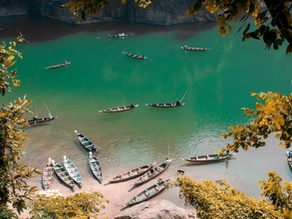
The Northeastern part of India is a wonder in itself. This corner of India holds an array of stunning natural wonders and has long been famed for offering stunning views of mountains, lakes waterfalls, wildlife parks, and valleys. It is truly a photographer’s paradise. You may just be an occasional traveler but that definitely should not be a reason to stop you from posting the most visually pleasing pictures on your social media. Instagram aesthetics shouldn’t just be confined to the world of Influencers. To ignite the influencer inside of you, visiting Northeast India will surely help you achieve the status as it has so much to offer in terms of Instagrammable places in Northeast India. Instagarmmable places in Northeast India Here is a carefully curated list of the most instagrammable places in Northeast India that will surely make your jaw drop: Ziro Valley, Arunachal Pradesh Dzukou Valley, Nagaland Umiam Lake, Meghalaya Tsomgo Lake, Sikkim Cherrapunji Living Root Bridge, Meghalaya Loktak Lake, Manipur Monabarie Tea Estate, Assam The Heritage, Nagaland Laitlum Canyon, Meghalaya Majuli Island, Assam Rih Dil Lake, Mizoram Gurudongmar Lake, Sikkim Ziro Valley Credit: Reshav Bhuyan A valley adorned in patches of sprawling paddy fields surrounded by thickly forested mountains of bamboo and pine trees, Ziro Valley in Arunachal Pradesh is a treat to the eyes. The valley is one of the most loved destinations in the state. The various pictures on social media singing praises of the place will live up to its hype. Dzukou Valley Credit: Prasanta Talukdar A hidden paradise nestled in the hills of the Nagaland-Manipur border, Dzukou Valley is a landscape that is straight out of a storybook illustration. Every inch of the valley from the point of its inception serves as a picturesque location that will grace your Instagram feed with so much flair. Umiam Lake Credit: Sam Issac One of the most scenic regions in Meghalaya, Umiam Lake is truly every photographer’s paradise. The hills overlooking the lake give a dramatic tone to the entire surrounding. Another testament that adds to the credibility of this lake is that the site serves as a popular wedding destination. Tsongmo Lake Credit: Sumit Agarwal An ethereal water body in Sikkim, Tsongmo Lake gives off a paradisical impression as you explore the surrounding of the lake. Every inch of the lake serves as an ideal spot for an Instagram-worthy picture. The color of the lake changes with the changing seasons and hence every season has something different to offer to its visitors. Cherrapunji Living Root Bridge Credit: Trip Savy A unique man-made wonder called the Living Root Bridge in Cherrapunji is indeed a place worthy of blessing the Instagram feed. The bridges are spread all over Meghalaya but the one in Sohra is famed for the double-decker bridge which is almost pristine and flawless in nature. Loktak Lake Credit: The Culturegully If you are looking for a location that provides an endless picturesque view without obstruction, then Loktak Lake in Manipur is the one for you. The lake is a natural wonder with a panoramic view of meadows and plains, and Phumdis which is a type of circular vegetation. It also boasts of housing the only known floating island in the world. Manobarie Tea Estate Credit: Getty Images The Manobarie Tea Estate is the largest in Assam. It is an endless expanse of the luscious green tea plantation that offers the perfect setting for taking the best picture at all and any angle. As you enjoy the scenic beauty of the garden, you can also take time to enjoy a cup of freshly brewed tea. The Heritage Kohima Credit: Joony A colonial bungalow turned into a hotel, this stunning location in the capital city of Nagaland is unrivaled when it comes to stellar backdrops for pictures. The whole length of the place gives off a vintage vibe given that it was built during the mid-20th century. It also hosts a traditional hut and pavilion which offers a spectacular view of the mountains surrounding the town. Laitlum Canyon Credit: Moishur Rahman A sublime viewpoint that can truly be considered picture-perfect is the Laitlum Canyon in Meghalaya which is truly a work of wonder. The viewpoint extends a bird’s eye view of the surrounding that includes the stunning gorges, steep winding stairways all the way down the valley, and a view of Rasong, a small hamlet that rests in the folds of the ridges at the Laitlum gorge. Majuli Island Credit: Alex Reynolds A quaint river island settled in the Brahmaputra River, Majuli island is the largest river island in the world. The island is covered in lush greenery on all sides with scattered bamboo huts and many villages dotted all around the landscape. An oasis of tranquillity, it is an ideal location for taking the most phenomenal photos for your Instagram feed. Rih Dil Lake Credit: Thawngpang Relnak The Rih Dil Lake in Mizoram is among the most serene water bodies that you’ll ever encounter. The heart-shaped lake is encompassed by a dense forest mountain on one side and a luxuriant rice paddy field on the other. Its surrounding is so enticing that any picture taken around the lake will turn heads for a second glance. Gurudongmar Lake Credit: Siddharth Bakaria The highest lake in India at an altitude of 17800 ft, the Gurudongmar lake in Sikkim is rightfully the highlight among all other entrancing destinations in the region. The lake with sparkling turquoise water body is adorned by snow-capped mountains all around it. This pristine lake is so magnificent that it undeniably deserves a spot on your Instagram page. So, the next time you decide to visit this wonderful region of India, make sure you take your best self and a good camera to capture all the wonderful natural wonders that the place has to offer. Enjoy the vibrant culture, and hospitable natives, delectable local cuisines, and the stunning visuals of Northeast
Majnu Ka Tila: Delhi’s Mini Tibet
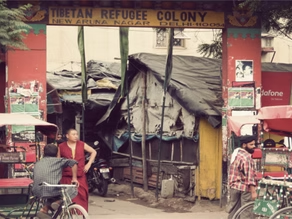
Photo of Majnu Ka Tila Entrance by Tibetan Journal Majnu Ka Tila, commonly called MKT by the cool kids, is also known by names such as New Aruna Nagar Colony, Chungtown, and Samyeling. Situated on the banks of the Yamuna River in the North Delhi District, the place is called Mini Tibet of Delhi because of the culture that the people living here follow. Photo of Majnu Ka Tila Gurudwara by India Times The name Majnu Ka Tila was taken from the Gurudwara which goes by the same name. The Majnu Ka Tila Gurudwara was built in 1783 by the Sikh Military Leader Baghel Singh Dhaliwal to recall the stay of Guru Nanak Dev Ji. The area was given this quirky name by Guru Nanak Dev Ji, who was very pleased by the services of Majnu, thus immortalising the place in the name of Majnu. A local Iranian Sufi singer, Abdulla, was nicknamed Manju and he was seeking enlightenment from Guru Nanak Dev Ji during the 1500s. Majnu used to help the villagers with crossing the Yamuna River for free and this pleased Guru Nanak Devi Ji. When Aruna Nagar was still developing during the 1950s, Tibetans came to Delhi from Tibet in March of 1959 and took refuge as the Dalai Lama went into exile to Dharamshala. It was in the year 1960, that these people were allotted land by the government, hence making them permanent residents of the place. Photo by Lipakshi Seedhar Upon entering the lanes of this Tibetan Colony, you can hear the faint sounds of the Dalai Lama’s preaching and the sweet sounds of the tinkling prayer bells that surround the area. Majnu Ka Tila has a lot to offer, be it food or shopping, or hotels, etc. You name it and you probably might find something more than that. Photo by Lipakshi Seedhar Thanks to social media, the place has attracted more Delhiites in recent years and since then, MKT has been offering something new each time. Now, it’s a hub for college students, tourists, etc to explore the very different face of Delhi. So, what all can you do at Majnu Ka Tila? The lanes of Majnu Ka Tila have tiny kiosks where you will find mostly everything at very affordable rates. You can buy Hippie jewelry like beaded bracelets, different types of studs, various styles of neck pieces for men and women, both starting from as cheap as ₹20. Some kiosks also offer Korean music CDs and you may also hear Korean music playing at some kiosks. Walking up to the next stall, you may find a variety of silver jewellery. Some are basic earrings, while some huge rings with colourful stones or skulls, different types of anklets, bracelets of all types, and everything under the sun. There are kiosks for clothes, be it for men, women or children. You can buy clothes like basic co-ord sets, different types of kurtis and kurtas, sundresses, jumpers, scarves, etc, available in a variety of colours and patterns. During the winters, you will see a wide variety of sweaters, jackets, and shawls, which are as soft as the softest teddy that you have and as warm as a winter cup of hot chocolate on a winter evening. The abundance of colours in every piece of garment is top- notch as you will definitely find something for yourself and the affordable range of everything just adds to the charm of the place. If you are a fan of Korean foods that are a hype on the internet these days but you can’t find them anywhere near you, then look no further as you’ll definitely find almost every Korean snack like the famous Kimchi or the extra spicy Korean noodles here and a lot of other international snacks like the Flaming Hot Cheetos. The street- food at MKT is very different from the rest of the Delhi street foods. A visit here would be incomplete without having a bite of the authentic Tibetan Momos or the Laughings, which are served sometimes dry and sometimes with cold soup, as per your liking. Photo by LBB The stores on either side of the MKT lanes also offer a lot of different things of a slightly better quality. You may find clothes in different styles. There are shoe stores where you may find some good quality sneakers and boots at a fairly good price and good quality. Some stores have very beautiful brass statues, Thangka paintings, different flavours of teas, handmade soaps, attar in a plethora of different fragrances, and knick- knacks like keychains, dolls, crockery with beautiful patterns and what not. Photo of Thangka by Lipakshi Seedhar Last but not the least, Majnu Ka Tila offers an array of cafés to choose from. Each café offers different types of cuisine at very reasonable prices. A little bit of information about some must- try cafés is given below: AMA Café Nor Yak Café and Restaurant MKT Hub Dolma House Yamuna Café Rigo Coffee House Busan Korean Restaurant Tee- Dee Restaurant Kham Coffee House Koko Restaurant 1. AMA Café Photo by LBB One of the first cafés that pulled the crowd to the lanes of Majnu Ka Tila, is without a doubt the highlight of the place. With some tasty food, AMA Café offers books to the diners. The ambience of the café is so welcoming and warm that one can sit for hours at length sipping their drink without getting bored. There is a very pretty balcony on each floor of the café, which has become one back drop for a lot of aesthetic Instagram posts. Cuisine: Italian, English, Tibetan, Fast Food Timings: 8am- 10pm Cost for 2: ₹500 Address: House no. 6, 1st Floor, Majnu-ka-tilla, New Aruna Nagar, New Delhi, Delhi 110054 2. Nor Yak Café and Restaurant
Cozy Caravan Trip to Sikkim
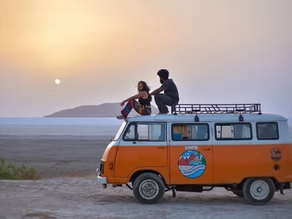
A detour to the “Valley of Rice” on your wheels leading to the foremost eastern state bound by the beauty of the Himalayas. Check-in to caravan to endure a slow-paced drive along with a homestay feel on your journey. Pack your bags for an offbeat vacation from busy streets to the cleanest village Sikkim. A drive across the alpine meadows, rugged valleys, river meandering, and milky white snow will unreel all the tensity of life and loads you with the best movements to cherish. The city looks lush and fertile at dawn and is arid and snowy at dusk with patchy drizzles. Morning alarm with bird chirpings, appetizing self-cooked brunch, evening walk on terrain with deciduous trees, and a night stay and campsites with gushes waves excite travelers more for this fun-filled, solace and adventure trip of Sikkim. An epic journey with a perfect setout plan and your home on wheels. Best pitstops and locations to explore in Sikkim. A pic from avanti page. Gangtok On the first day, arrive at the capital city and take a tour of the Tibetology Museum, shop for souvenirs on MG road and enjoy the savor food of Sikkim like momos, and tupka. Gangtok is the pitstop for other tourist destinations located east and west of Sikkim. The capital city is a mix of traditional tribe culture, hooping cafes, shrines, and glittery nightlife. It would leave with an ultimate foreign tour experience during the stay. A pic from holidayindia.com Gangtok to East Sikkim After exploring the Gangkot, head toward the east you get some notable attractions. Offer prayers and seek blessings from the most venerated Monasteries like Rumtek Monastery and Ganesh Tok of Sikkim. Trail a trek to Tashi viewpoint, white hall, Himalayan zoological park, and halt at night to see the moonlit mountains from your windows. Enjoy the Yak safari at Tsomgo Lake in the summer. The East Sikkim has many trek points Natula pass to ride along with the glaciers for a panoramic view of the highest peaks. A pic from holidayindia.com Gangtok to West Sikkim: Heading to the west you can visit the famous World Heritage site Kanchenjunga National Park and the park built for the exploration of species like Leopard, Red, Panda, Musk deer, etc. West Sikkim has forests, monasteries, sacred lakes, river valleys, rock gardens, and waterfalls. Pelling, Yuksom, Goecha la, Geyzing, and Darap villages are popular tourist destinations. A pic from Halfsamosa.com North Sikkim: Heading to the North you get deep into nature with freezing lakes, snowy mountains, and genial tribes. North Sikkim is the hub for stunning landscapes, lush green valleys, and pristine lakes. Tiny villages like Lachen and Lachung, are known for their orchards, monasteries, and stunning views. Lachung could be your base to explore the beautiful Gurudongmar Lake and the Shingba Rhododendron Sanctuary. On your way to Lachen see the beauty of chopta valley, Mt Katao, crow’s lake, and the species flocking near the Teesta River. In winters you can witness the most celebrated color festival of nomadic tribes. A pic from the holidayindia.com website On the flip side of the coin, a campervan puts you into trouble refusing to budge, stuck in puddles, and mostly the permits for a staycation at the borders. Deal with them using these tips and tricks to be no hiccups on the way. If you are self-driving, take turns at the wheels as the terrains are rugged. Get Ecards and state permits handy. Pack your camping kits like foldable chairs, tents, sleeping bags, battery lights, hammock, and cooking essentials. A first aid kit with all necessary medicines according to your health history. Carry all your sanitary essentials. Jordon the list of various campsites to park and camp in different locations. Plan your stuff according to the trip duration. A manual route map is essential as google maps don’t work in remote places. Traveling with pets, get equipped with their essentials as well. Post-covid kit like sanitizer, masks, and test kit.

